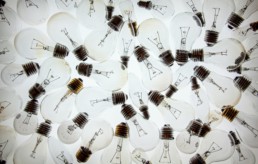The Spring STEAM Program
The Spring STEAM Program is a 5-day program of interactive workshops and lectures aimed to deepen the interests of young students interested in STEAM. The program will range from broad topics like exploring chemistry to advancing in HTML. Each day of the program will have 2 sessions in either Science, Technology, Engineering, Art, or Math, and will take place from 8:00-9:00 am or 1:00-2:00 pm (refer to the schedule for more details). If you are interested in your child (4th-8th grade) learning about STEAM, this would be a great opportunity to utilize their spring break.
In this event, mentors from all around the world (California, New York, Canada, Egypt, India) will be sharing their knowledge and experience to help students get started/interested in STEAM.
For more information and to register, click HERE
WISC STEMinars: Genetic Engineering
Living things are made up of many, many cells, and these cells have instructions inside them called DNA (deoxyribonucleic acid). These instructions include things called "genes" which control the proteins our cells create, and ultimately, control how our cells look and behave! Genetic engineering is a super important development because we can build and alter genes to make cells look and behave in certain ways. Why is this a big deal, and how does this help scientists better understand life? Learn with us and grad student Tyler Perdue at 11 am on April 10th!
Join us on April 10th at 11 am to hear a graduate student discuss their research and answer questions about being a scientist! Register HERE
STEM for Social Good Bootcamp: Climate Change
About this Event
Today, the effects of climate change are felt all over the world. According to the United Nations (UN), girls and women with less resources commonly face higher risks and greater burdens from the impacts of climate change. Girls' and women’s unequal participation in governmental decision-making processes worsens inequalities and often prevent girls and women from fully contributing to climate-related planning, policy-making and implementation.
Let's take action together! Join Girl Up at this STEM Bootcamp: Climate Change to deepen your understanding of climate change and its disproportionate impact on girls and women, learn about UN efforts to combat climate change, gain tools on discussing climate change, strengthen your advocacy skills through a climate change advocacy activity, and begin brainstorming a STEM-centered solution to a climate change issue in your community. You can expect to gain insight into climate change engineering career routes, hear from a panel of women in STEM, and learn how to apply for a $500 STEM for Social Good grant.
This Girl Up STEM for Social Good Bootcamp: Climate Change will run from 5:00 - 7:30 PM EST (New York City Time Zone, USA) in an interactive, virtual format. The event content is mostly geared toward leaders in grades 6-12, ages 13-22.
RSVP here
STEM Virtual Speaker Series
X-STEM All Access is an entertaining, educational, and interactive online STEM experience for 6-12th graders. Through a series of daily Livestream events, students will hear from an exclusive group of visionaries who aim to inspire kids about careers in science, technology, engineering, and math.
X-STEM All Access 2021 is moderated by Justin Shaifer (Mr. Fascinate), who will take kids on a STEM adventure with new engaging speakers, brain breaks, and Q&A’s each day of the event.
Check this page to stay up to date on all things X-STEM All Access, like new speakers, special guests, and more!
Atlanta Science Festival
Join STEM enthusiasts from around the US in a fun and engaging 2-week program. You can Build-a-Brain or Plant a Pollinators Paradise to name a few!
Check out the full schedule as well as RSVP HERE.
Buoyancy & Density with STEM NOLA
Participate in a live STEM session as we engage in activities with buoyancy and density at home. To prepare for the session, download your STEM Card to gather all your materials!
RSVP HERE
Surprising Science in Your Home
The worlds of science, technology, engineering, and mathematics (or STEM) are exciting and relevant in so many ways. STEM is everywhere and in everything, making our lives run smoothly. Without STEM, we would not have many of the things we use on a daily basis--from microwaves and lighting to yep, your favorite mobile app.
Inventions and innovations of all kind stem from STEM (no pun intended, promise!).
When was the last time you pondered the exact science or mathematical formula that makes the simplest--but, oh, so necessary--things work? Well, consider this a lesson in the surprising science in your home:
Microwaves
Microwaves are in almost every American kitchen. They quickly and efficiently heat food by transforming electric energy into heat energy directly in the molecules of food. This appliance uses electric energy to generate tiny little microwaves, or waves of energy, that travel through air at lightening speed. The waves move up and down rapidly and bounce off of the reflective walls of the microwave. When they pass through food, the energy causes the molecules of the food to bounce up and down rapidly as well. This movement generates heat in much the same way that rubbing your hands together quickly. The heat builds up pretty quickly inside your food, thereby thawing, heating or cooking it.
Lightbulbs
Electricity is still the primary source of lighting in most homes. When the sun goes down, it’s as simple as flipping a switch to bring light into your home. The science? Simple: Lightbulbs connect to an electric circuit inside your house. An electric circuit is an interconnection of wires through which electricity travels. When the switch is flipped, the circuit is completed, allowing electricity to pass through the lightbulb. Electricity traveling through the lightbulb is converted from electric to light energy on the thin wire (aka filament) within the bulb. This thin piece of metal is the catalyst for your experience of light.
Bluetooth
If you've ever connected your Airpods or speaker to your smartphone or other device, you probably used Bluetooth. This technology, like microwaves, uses energy waves but a different type. Bluetooth uses longer radio waves (rather than short microwaves) to carry signals. When the radio waves transmit from your device, they travel through the air. Using electricity, a Bluetooth-enabled receiver picks up these waves and converts them to sound.
Daily life would look extremely different without these and other major innovations. Sometimes it's fun to just consider the world around us and how exactly we get to enjoy even the seemingly simple conveniences. Here at Play Like a Girl, we encourages you to take this exercise even further. Is there something you can create, build or develop to help improve daily life? If so, get at it! We're rooting for you.
Leave a comment below and share some of your favorite things powered by STEM.
Scientific Benefits of Staying Active
Play Like a Girl aims to keep girls active and involved in sports--especially through middle school when they're most likely to quit. Research demonstrates that being part of a team helps girls develop self confidence, communication skills, motivation, leadership skills, and countless other benefits. Beyond that, staying active does a plethora of good for your physical health.
Let’s explore the science behind the positive outcomes of exercise:
Cardio
When you engage in cardiovascular activity, your heart rate, blood pressure, and breathing increase. Your heart works to pump blood, which carries oxygen, throughout your body. This provides your muscles with the necessary energy to move. Doing this for an extended period of time strengthens your heart and lungs. They become more efficient, meaning they can circulate more oxygenated blood through the body using fewer breaths and pumps. Regular cardiovascular exercise results in lower blood pressure and a more healthy heart and lungs. Examples of cardiovascular exercises include running, swimming, rowing and biking -- really, any sport or activity that elevates your heart and leaves you out of breath.
Strength
When you engage in strength training, your muscles contract and strip layers of cells off as a result of the physical exertion. During recovery, your body rebuilds the layers stripped during exertion and makes them stronger than before. Regular strength training maintains muscle mass, improves bone health, and controls body fat levels (higher amounts of muscle mass improve metabolism of fat). Also, when you maintain your muscle mass, you can prevent many kinds of injuries, as muscle is protective. Strength exercises include sit ups, push ups, pull ups, and often involve dumbbells or other kinds of weights. These types of exercises cause your muscles to feel tired the next day, which means they are rebuilding!
Flexibility
When you engage in flexibility training, your muscles are stretched out and blood rushes in. The blood carries oxygen and nutrients to them. Maintaining flexibility helps muscles maintain their length and strength. It is best to stretch both before and after being physically active. Stretching before exercise ensures that muscles are warmed up and oxygenated enough to reach a full range of motion. Stretching after exercise reduces tension in the muscles and ensures that they receive the nutrients to properly recover. Flexibility training includes activities like touching your toes, shoulder rolls, and any other stretches.
When you do any type of physical activity, your body releases endorphins. Endorphins are chemicals that react in a positive manner with the pain receptors in your brain. The release of endorphins boosts your mood and helps your body become more resilient. These useful chemicals also help your immune system function better.
Beyond that, exercise helps blood circulate to the brain better. The influx of blood flow to the brain stimulates it, helping you stay more awake and alert. It also aids the brain in forming new neural connections which retains plasticity, or the ability for the brain to rewire itself. Because of that, physical activity is linked to gains in academic performance.
STEM is everywhere and in every thing -- including our bodies. Be sure to consider the science behind what is happening inside your body the next time you exercise or play your favorite sport.
Office Hours with Jennifer Berry
Jennifer Berry
Director of STEAM and Science
Metro Nashville Public Schools
“The important thing is to never stop questioning.” —Albert Einstein
Jennifer Berry, PhD, is the Director of STEAM and Science for Metro Nashville Public Schools. As a former science teacher and administrator, Dr. Berry has been recognized locally, nationally, and internationally for her work supporting STEM instruction. She has a Bachelor of Science in Zoology and Masters in Teaching from the University of Arkansas, and a Doctorate of Education from Capella University.
5 Things She Can’t Live Without
Nature: My happy place is outside, so I can observe the natural world.
Animals: I love having animals, specifically dogs, chickens, and horses in my life. They make everything better.
Books: I love to read, so I never have a book far from me at any given time.
Flowers: There is so much beauty in nature, especially through flowers. I love their smell, texture, colors, and geometry.
Adventures: I love traveling and exploring new places.
The Six Nutrients Your Body Needs Every Day
Here at Play Like a Girl we are always thinking about what we should to be doing to be the best versions of ourselves. Healthy eating is an important part of this pursuit. Good nutrition affects our sleep, academic and athletic performance, and overall emotional wellbeing.
We all need to eat every single day to live. However, not many of us stop to think about the science behind what we put into our bodies. Below are the six essential nutrients and why we need them:
Vitamins
Vitamins are organic (containing carbon) compounds that all life forms need in small amounts. There are 13 different kinds of vitamins which perform hundreds of roles within the body. They are necessary for immune function, maintaining energy levels, repairing cellular damage, and more. Vitamins are essential micronutrients that the body cannot produce sufficiently on its own, so we must consume them in our food. Consuming a wide range of vegetables, meat, and dairy is the best way to ensure that you're getting enough of all the vitamins you need.
Minerals
Minerals are another type of micronutrient. They are different from vitamins because they are not organic. Major minerals include potassium, calcium, iron, and more. They are important because they are an important ingredient in all of the chemical reactions that occur in our bodies. Reactions that balance water levels within cells, strengthen bones, carry oxygen throughout the body, and maintain blood pressure all make use of minerals. You can make sure you are getting all your minerals by consuming meat, seafood, leafy greens, fruits, whole grains, and/or beans and legumes.
Protein
Protein is an essential nutrient that every cell in the body requires. It is often referred to as the building block of the body; the body uses protein to build and repair itself. Protein provides essential structural support in bones, muscle, cartilage, skin, and blood, as well as enzymes, hormones, and other chemicals within the body. You can find protein in meat, fish, eggs, beans, and peas.
Fats
Fats store energy, protect organs, act as messengers, help proteins function, and start essential chemical reactions in the body. The cycle the body undergoes to make, break, and store fats is how it regulates energy levels. Fats provide structural support to organs and proteins and help the body store certain vitamins and minerals. Fats do not mix with water, making them an essential component of cell membranes and other tissues within the body. You can get the healthy fats that you need in nuts, fish, vegetable oil, seeds, and our favorite -- avocados.
Water
Water is the most essential nutrient we all need. Every single cell in the body requires water to function, as it is an essential component in the chemical reactions required to generate energy. Water is also involved in nearly every chemical process within the body. It helps flush out toxins, aid in digestion, maintain brain function, and more. It is important to drink at least 64 ounces or half your body weight in water each day. This is especially important for the athlete in all us who should be exercising or moving outside in the heat and sun.
Carbohydrates
Carbohydrates provide energy to all of the cells and tissues within the body. The body breaks down carbohydrates, releasing energy that is stored in them in the process. This energy fuels all other chemical reactions within the body. If you want to exercise, think, or even just sleep, your body needs energy from carbohydrates. You can get carbohydrates from quinoa, brown rice, whole grain breads and pasta, and fruit.
Healthy eating and understanding why it is important is the first step to becoming a successful, empowered woman. Play Like a Girl encourages all girls to consider the science at play, each time you eat.



